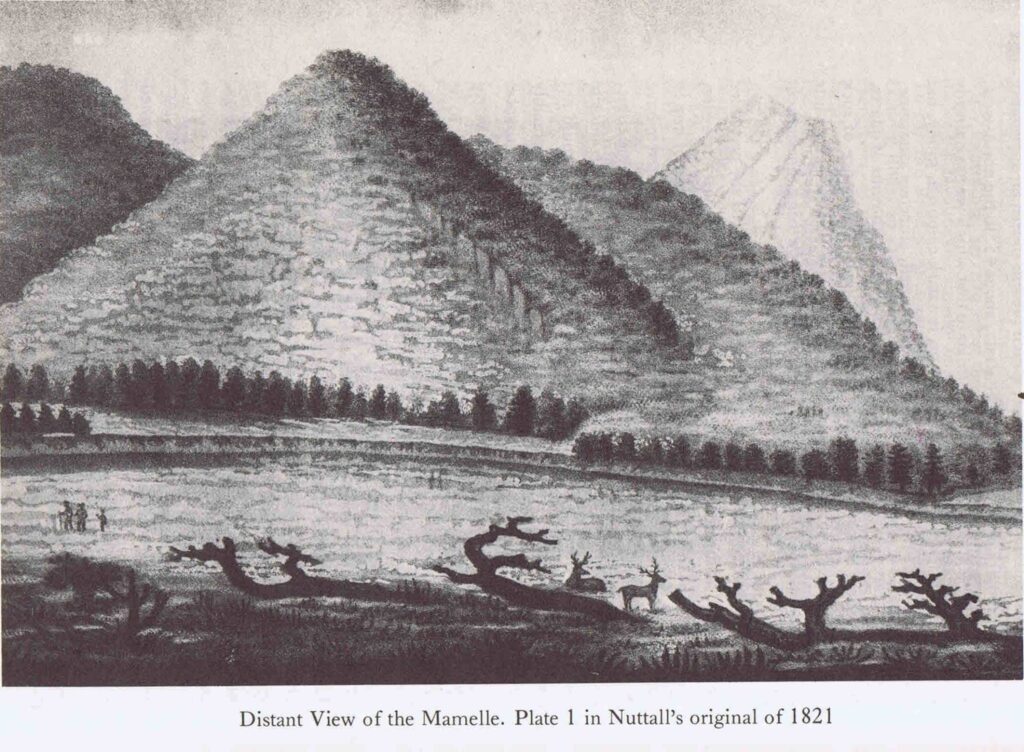
Ascending the Arkansas River from Arkansas Post on the Mississippi, Thomas Nuttall arrived in the vicinity of present-day Little Rock, Arkansas on March 20, 1819. “The fascade or cliffs, in which it terminates on the bank of the river, is called the Little Rock, as it is the first stone which occurs in place.” He is a little more than a month from his arrival further upstream at Fort Smith on April 24. Of the settlement at Little Rock, he found “a few families living on both sides [of the river], upon high, healthy, and fertile land…”
On March 21 he described an occurrence we remain all to familiar with today: “For three or four nights past, we experienced frost sufficient to destroy most of the early grape, plum, popaw [sic], and red-bud bloom. At 6 o’clock this morning, the thermometer was down to 22 degrees.”
Continuing upstream, he had his first sighting in the distance of “very considerable round-top hills, one of them, called the Maumelle, in the distance, where first visible, appeared insulated and conic like a volcano.” He described the cliffs bordering the river “broken into shelvings, were decorated with the red cedar (Juniperus virginiana) and clusters of ferns…After emerging as it were from so vast a tract of alluvial lands, as that through which I had been traveling for more than three months, it is almost impossible to describe the pleasure which these romantic prospects again afforded me. Who can be insensible to the beauty of the verdant hill and valley, to the sublimity of the clouded mountain…”
